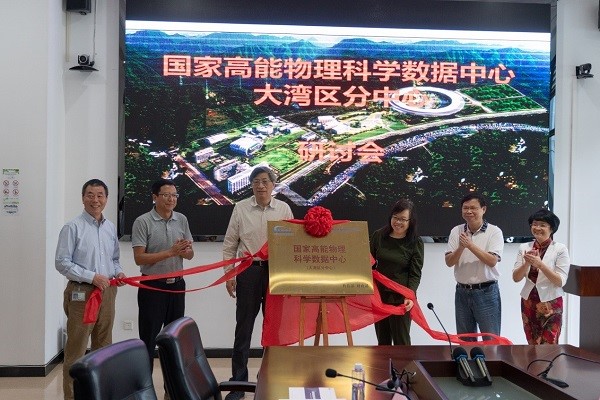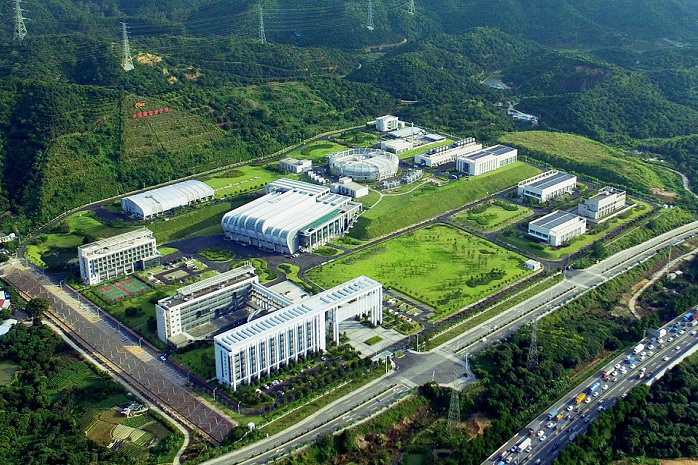Highlights/News
China Spallation Neutron Source Builds Four New Instruments
2023-01-19
China Spallation Neutron Source (CSNS) has successfully completed construction of four neutron instruments in recent days. They are: the Engineering Materials Diffractometer (EMD), the Very Small Angle Neutron Scattering instrument (VSANS), the Energy-Resolved Neutron Imaging instrument (ERNI) and the High energy Direct geometry inelastic neutron scattering spectrometer (HD).
EMD, which was jointly built by CSNS and the Dongguan Centre of Excellence for Advanced Materials, is China's first time-of-flight neutron engineering materials diffractometer. Specialized in the analysis of strain, stress, texture and Bragg edge transmission imaging, EMD will provide a cutting-edge platform for stress measurements and analysis of large and complex engineering structural components. It can realize in-situ tensile and compressive mechanical loading in high- and low-temperature environments, as well as satisfy the need for simulation of various service conditions such as long-cycle fatigue loading. EMD will provide a unique technique for the development of new materials, nondestructive testing of key equipment, service life management, etc., thus providing significant technical support for solving major scientific problems in the fields of materials and equipment manufacturing.
Funded by the Department of Science and Technology of Guangdong Province, VSANS is the world's first multi-slit instrument based on a pulsed spallation source; it is able to run in traditional SANS, multi-slit VSANS, or polarizing SANS mode. VSANS is equipped with a variety of sample environments, including water bath, high temperature, rheometer, stop-flow, magnetic field and small-angle X-ray scattering (SAXS)/wide-angle X-ray scattering (WAXS), and it performs the multi-scale structure characterization from 0.3 to 1000 nanometers simultaneously. Researchers can thus obtain the neutron contrast distribution, absolute molecular weight, basic shape and interaction of the scatterer. The VSANS instrument will be used to clarify the structure and interaction mechanism of the mRNA vaccine in the life sciences, key technologies in the processing and molding of polymer-based fiber in chemistry, the structure–performance relationship of quantum material in materials science, and regulation of the morphology of battery separators in energy science, etc.
ERNI was also funded by the Department of Science and Technology of Guangdong Province. ERNI is China’s first and only pulsed neutron source-based neutron imaging instrument that combines high spatial-resolution neutron imaging with neutron diffraction. Compared with X-ray imaging, neutron imaging has the advantages of deep penetration and sensitivity to light elements, which enables it to detect structural information several centimeters deep inside materials and components. ERNI offers several methods for quantitative neutron imaging: Neutron radiography and tomography can provide structural information about defects, holes and cracks inside samples; Bragg-edge neutron imaging and neutron diffraction can obtain the 2D/3D spatial distribution of crystallographic structures, magnetic structures and the stress and strain inside materials; the neutron grating interferometer can be used to visualize 3D domain structures. ERNI will play an important role in research on new energy, new materials and high-end equipment manufacturing. It will also be applied in research fields related to cultural heritage and archaeology, plant physiology, geology, deep sea, etc.
The high energy inelastic neutron scattering spectrometer (HD) was jointly constructed by CSNS and Sun Yat-sen University. It is the first medium- and high-energy inelastic neutron scattering spectrometer in China, thus filling the need for a spectrometer with incident energy over 100 meV. HD not only can obtain spatial distribution information on scattered neutrons, but can also detect energy changes in scattered neutrons. It can measure the dynamic behavior of material microstructures in the momentum and energy space and is the most direct tool for studying material meta excitation (such as lattice and spin mechanics). HD’s energy range for incident neutrons is 10-1500 meV and its optimal energy resolution is 3%. It can provide a 1.5-800 K high and low temperature environment and up to 7 T magnetic field environment. By synergistically using the Fermi chopper and bandwidth chopper, the multi-wavelength mode and single-wavelength mode can be quickly switched. HD will provide key microstructure dynamics information such as lattice thermal vibration, spin wave and crystal field for frontier basic research on the physical mechanisms of high temperature superconductivity, the mechanism of quantum magnetism, the transport properties of thermoelectric materials, the ion diffusion mechanism in batteries, and the activity of biological materials, so as to provide important and basic support to the improvement of related materials and the development of new materials.
So far, CSNS has built a total of nine neutron instruments. Meanwhile the CSNS-II project will soon start construction, building 11 more neutron instruments and experimental station and thus increasing CSNS’s research capability and capacity.
Contact Information
Mr. GUO Lijun
ljguo@ihep.ac.cn

